 Numerous athletes today are doing yoga to gain a competitive edge in their game. Yet, despite the adoption of a yoga practice by many professional athletes and collegiate teams, some athletes are hesitant to give yoga a try. Instead of gaining more coordination and power,, they remain prone to injury due to physical imbalances. Rather than working on mental focus, they risk crumbling under pressure. Use these benefits of yoga to help your athletes get started today!
Numerous athletes today are doing yoga to gain a competitive edge in their game. Yet, despite the adoption of a yoga practice by many professional athletes and collegiate teams, some athletes are hesitant to give yoga a try. Instead of gaining more coordination and power,, they remain prone to injury due to physical imbalances. Rather than working on mental focus, they risk crumbling under pressure. Use these benefits of yoga to help your athletes get started today!
Numerous years of my childhood were spent on the soccer field. By the time I was twelve, I had been playing competitively for half of my life and was traveling almost year round with my club soccer team.
Maybe it was the death of my father at age 13 that jolted my priorities in life. Or maybe it was the fact that I was just burned out by my junior year of high school.
But I left the soccer world… and in doing so, my inner athlete still needed an avenue through which to compete. In college, I found volleyball (indoor and beach), slalom water skiing, and Ultimate Frisbee.
Participation in these sports–combined with heavy weight lifting and minimal stretching–set my body up to be extremely tense. Thankfully, I found yoga at the end of my graduate program. Due to my tight body, I can deeply relate to the unique plight of athletes as they hit the yoga mat. My hope is that these benefits of yoga give athletes–ALL ATHLETES–the confidence to give it a try!
Photo Credit: Rob Wingate
YOGA FOR ATHLETES
At some point in my mid-twenties, I gave up most competitive sports and went all-in on my yoga mat. Well, almost all in. I still play in recreational golfing tournaments and use yoga to enhance my golf game.
Yet, it’s unrealistic to think–or expect–your athletes to give up their sport for yoga. Instead, think of yoga as a supplemental element of their training plan. Here are some important points to consider when approaching athletes and discussing the benefits of yoga with them.
Yoga is not their sport
Yes, I just said this, but you want to reinforce to your clients that yoga will not replace their sport. Instead, you will use yoga to provide numerous physical, mental and emotional benefits that can increase their performance. That being said, athletes often need a reminder to back off in yoga. It just might be the only place they don’t have to give 100%.
Look for gaps in their training
Even professional athletes, who have coaches, trainers, and physical therapists on staff, have gaps in their training. Yoga can fill these gaps. You just have to ask about their current training plan, and find out what’s missing.
Athletes are aware
Most athletes, regardless of their level of competition, have a good awareness level about their bodies. This makes it easier for them to tap into the physical sensations as they practice yoga. It also increases the likelihood that they can internalize the benefits of yoga more quickly, too.
While I talk more about how to teach yoga to athletes in another article, let’s look at the ways in which yoga benefits athletes here.
(1) YOGA BUILDS BALANCE
There are many ways in which to define balance. The broadest of these is the ability to distribute your weight evenly, and thus remain stable. Many sports require this type of balance. Athletes must be sure-footed or be able to remain upright. And they must be able to do so when in motion, often switching directions or shifting their weight at a fast pace.
Balance also refers to the community effect in the body. Not one muscle group works in isolation from the rest of the body. Thus you want to establish a healthy relationship between larger muscles and smaller muscle groups so that your body operates efficiently.
Due to training programs and the very nature of each sport, it’s easy to have some muscle groups dominate. Such routines can also entirely neglect certain areas of the body. This can leave some areas weak and make athletes more prone to injury.
Yoga is one of the best ways to cross-train the underutilized muscles of any athlete. This, in turn, can create a greater sense of harmony within all body systems.
(2) YOGA INCREASES POWER
Power is generated by strength and mobility. Likely, athletes will have plenty of strength training on their checklist. So, it’s important to look at how yoga can be used to increase mobility. Mobility is the range of motion available in the body that you can control. Said another way,
Mobility = Flexibility + Control
Yoga is a way in which you move the body into greater ranges of motion (ROM). In fact, in yoga, you use slow active articulation as you approach the endpoint of your ROM. Essentially you move in yoga with great control.
As athletes move in this mindful way on the yoga mat, they increase their mobility. This can then pair with the strength they are developing in other areas of their training program, and increase their overall power as a result.
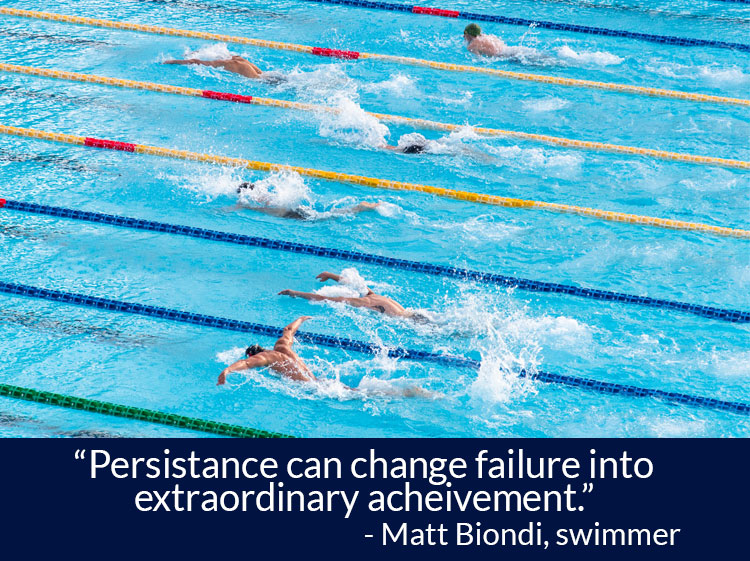
Photo Credit: Serena Repice Lentini
(3) YOGA DEVELOPS RESILIENCY
By its very definition, resilience is the ability for an object to spring back into shape. It’s about being elastic. Think of a rubber band. Usually, you can stretch it out and it returns back to its original form when you let go (even if your finger slips and it hurts as this happens). The rubber band is both strong and pliable.
But what happens if you go to stretch a rubber band is dry and brittle? It snaps and breaks.
For athletes, if they don’t have resilience in their tissue, they’re far more likely to get hurt.. Yoga creates strength in the muscles at an elongated position, and it trains the muscles to relax entirely (and often do so at a longer resting position). Thus, injury prevention is one of the best benefits of yoga for athletes.
(4) YOGA REFINES THE MIND
Focus is not a foreign concept to athletes. In fact, it’s a skill they utilize often when practicing and competing. Only, this level of focus can keep athletes locked in the stress response long after their training or match has ended.
That’s where yoga can work wonders to refine the mind. Yoga postures can shift attention back to the present moment without the need to fight or strategize. Pranayama is also a great way to slow down the fast-paced thinking that accompanies their sport.
Basically, yoga teaches athletes to turn their focus on when needed, and off when they don’t. This level of mental control improves their concentration when it’s needed. And, it can help them have better memory and psychological well-being in all areas of life.
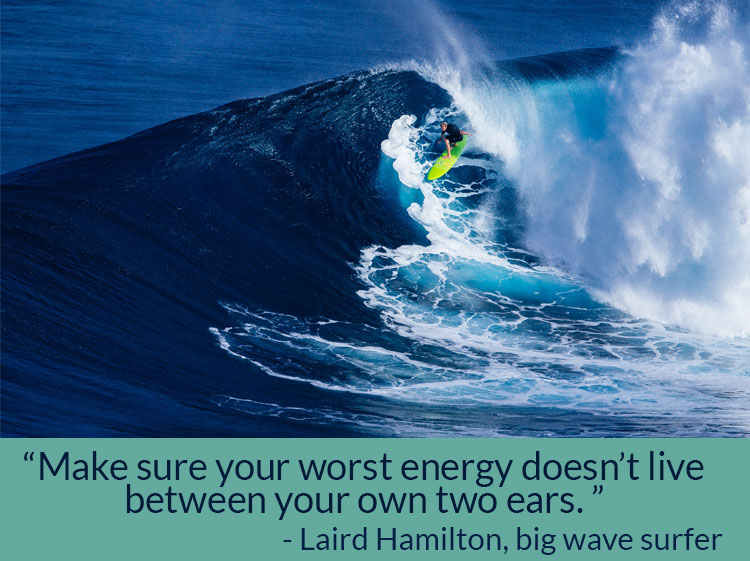
Photo Credit: Anton Repponen
(5) YOGA CREATES MORE EFFICIENT MOVEMENT
One of the biggest factors to creating efficient movement is proprioception. This is just a fancy way of saying your body understands how it is moving in relation to other parts of itself and the environment in which it exists.
Your body has an innate wisdom to gather that information at all times. This is done through sensory organs called mechanoreceptors.
These mechanoreceptors are located throughout the body, including an especially high density in the feet, and they receive information from the body’s physical environment. From there, they send that information to the brain via the connective tissue and nervous system.
In the broadest sense, yoga heightens the awareness of your entire body. On a subtle level, it also increases the accuracy of how that information is received and it increases the speed of which that information is processed. This means you can move your body, in whatever your environment, in a more efficient manner.
(6) YOGA IMPROVES RECOVERY
For athletes, recovery is the period of time in which they prepare for their next training session or competition. It’s a time when the ATP and glycogen stores are replenished in the body. And, their entire system uses more energy and consumes more oxygen to heal.
Yoga can improve an athlete’s ability to recover because:
Yoga increases circulation in the body
With improved circulation, the muscles can replenish lower oxygen levels more easily and quickly.
Yoga improves hydration
This can also enhance help the body receive more oxygen and it can reduce the effects of delayed onset muscle soreness (DOMS). Water is also a crucial element in the ground substance of connective tissue, and thus when hydration is better, there is more resilience and structure in the fascia.
And yoga returns the body to a parasympathetic state.
As mentioned previously, when an athlete is pushing hard during training and competing in their sport, the sympathetic nervous system is dominant. This allows athletes to mobilize all necessary body parts for action and stay focused in the moment.
Yet when the sympathetic nervous system stays in control, an athlete is exposed to chronic stress. In time, this can cause unwanted muscle tension, fatigue, sleep disorders, respiratory issues, and much more. Yoga turns on the parasympathetic nervous system to prevent this from happening. And, it teaches athletes to memorize this pattern so they can reset their nervous system more easily in the future.
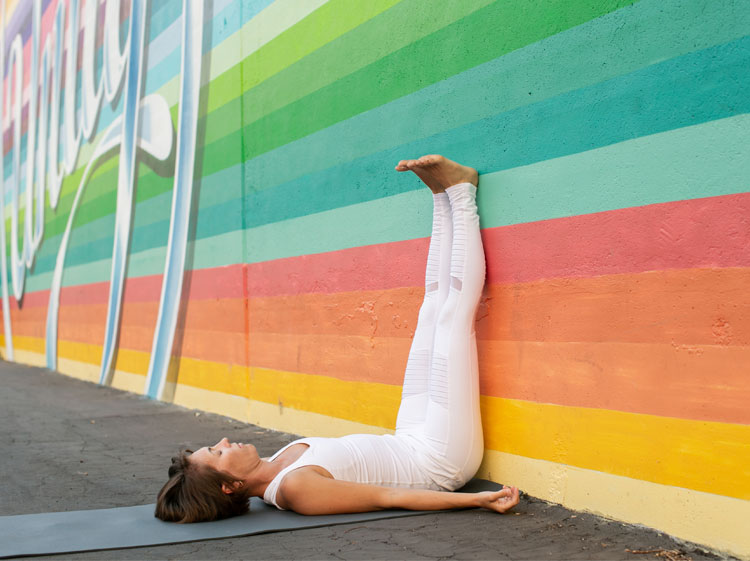
Photo Credit: Diane Nicole Photography
(7) YOGA HELPS THE BODY ADAPT
If athletes use yoga to improve their ability to recover, this also allows an athlete’s body to adapt to the new demands of their training. Proper recovery prevents exhaustion. Yoga helps the body internalize this new set point. Yoga allows the body to process the new hormonal levels and nervous system changes more seamlessly.
Better adaptation allows athletes to approach their next training session with more physical vigor. They’ll have more focus, better energy levels, and more confidence.
And, athletes can stay away from burnout that often occurs when no real recovery has taken place.
PUTTING IT TOGETHER
There are numerous benefits that yoga provides athletes. It builds better balance, increases power, and creates more efficient movement. Yoga also trains the mind and helps the body recover on all levels. Plus, with so much knowledge of how yoga can seamlessly fill in gaps in the training cycle of athletes, it’s easier than ever to add this to their routine!
Take Action Now:
- Download this colorful document that highlights just how beneficial yoga can be for athletes
- Check out my Interview with Tiffany Cruikshank, founder of Yoga Medicine and former yoga teacher at the Nike Headquarters in Portland. She’s got great insights about how yoga can be woven into an existing training program.
- Get outside and play yourself. Whether it be a competitive endeavor or game for fun, you’ll appreciate the perspective of your athletes when you step off of the mat and into their world for a few minutes.


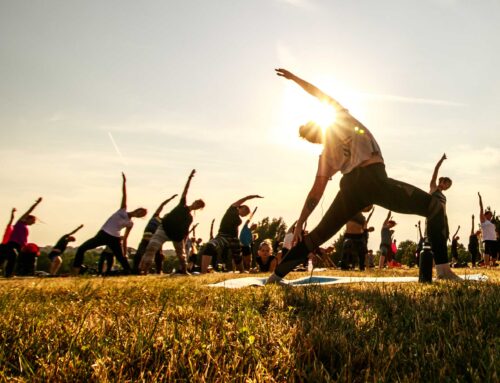



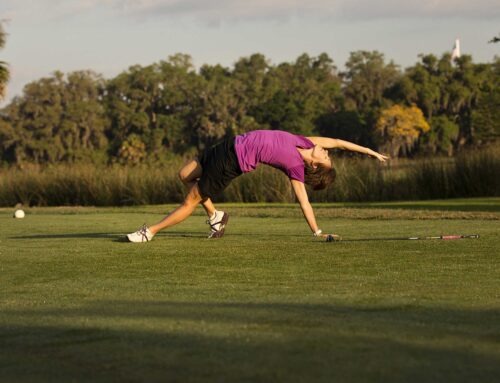


Awesome post! Keep up the great work! 🙂
My daughter is a talented runner, and I’ve been wondering whether or not to enroll her in a yoga class. I came into your blog when looking for an answer. It’s fantastic that you thoroughly discussed all of the benefits that yoga may bring for athletes, and I really like how you indicated that yoga could boost their flexibility and endurance, which could reduce their risks of getting hurt when playing sports. This is critical for me because my daughter has been getting injured while running frequently. Thank you for the helpful advice; I’ll definitely enroll her in a yoga class soon.